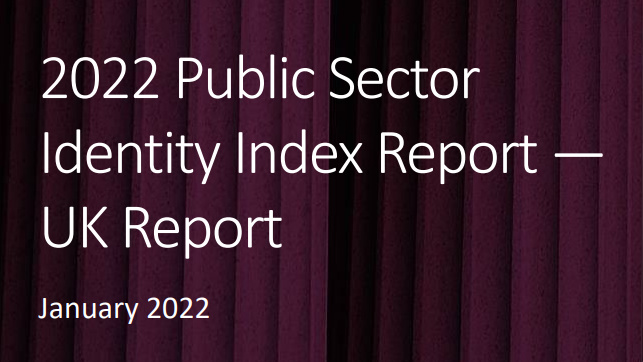Adobe warns of critical Acrobat and Reader flaws on Windows and macOS
The firm is urging users to update after discovering flaws that could allow arbitrary code execution


Adobe has urged Windows and macOS users to update their Acrobat and Reader applications after discovering that they contained flaws that could be exploited to execute arbitrary code.
Among the critical vulnerabilities are a heap-based buffer overflow (CVE-2020-24435), an arbitrary JavaScript execution (CVE-2020-24432), an out-of-bounds write bug (CVE-2020-24436) and two use-after free flaws (CVE-2020-24430 and CVE-2020-24437).
There are also bugs that allow local privilege escalation, including an improper access control flaw (CVE-2020-24433), a signature-verification bypass problem (CVE-2020-24429) and a race-condition flaw (CVE-2020-24428).
Another severe flaw comes from a security feature bypass that could enable dynamic library injection (CVE-2020-24431).
The flaws affect Acrobat DC and Acrobat Reader DC Continuous versions 2020.012.20048 and earlier; (for Windows and macOS); Acrobat and Acrobat Reader Classic 2020 versions 2020.001.30005 and earlier (for Windows and macOS) and Acrobat and Acrobat Reader Classic 2017 versions 2017.011.30175 and earlier (for Windows and macOS).
Adobe said that users can update applications to Acrobat DC and Acrobat Reader DC Continuous version 2020.013.20064; Acrobat and Acrobat Reader Classic 2020 version 2020.001.30010 and Acrobat and Acrobat Reader Classic 2017 version 2017.011.30180.
The company has also removed all Flash components from its PDF products. In its listing of top new features, the firm said that Flash is now deprecated and no longer used in Acrobat.
Get the ITPro daily newsletter
Sign up today and you will receive a free copy of our Future Focus 2025 report - the leading guidance on AI, cybersecurity and other IT challenges as per 700+ senior executives
“The various options available in a Form response file that were Flash dependent — Update, Filter, Export (All/Selected), Archive (All/Selected), Add, and Delete — are no longer available. These options are now replaced with the secondary toolbar having options to Update, Add, Delete, Export, and Archive the responses,” read the web page.
In addition, Adobe's PDFMaker menu in Microsoft's Word and PowerPoint apps have lost the Insert Media button. This enabled Office users to embed Flash content in documents.
"By default, Microsoft has disabled the ability to add Flash or Rich media content in the Office documents. If your document already has flash content embedded in it, Acrobat prevents embedding of Flash or Rich media in the converted PDF file and adds an image instead," read the web page.
"If you have enabled the Flash content in Microsoft documents, Acrobat adds a blank box in the converted PDF file."
Rene Millman is a freelance writer and broadcaster who covers cybersecurity, AI, IoT, and the cloud. He also works as a contributing analyst at GigaOm and has previously worked as an analyst for Gartner covering the infrastructure market. He has made numerous television appearances to give his views and expertise on technology trends and companies that affect and shape our lives. You can follow Rene Millman on Twitter.
-
 Should AI PCs be part of your next hardware refresh?
Should AI PCs be part of your next hardware refresh?AI PCs are fast becoming a business staple and a surefire way to future-proof your business
By Bobby Hellard Published
-
 Westcon-Comstor and Vectra AI launch brace of new channel initiatives
Westcon-Comstor and Vectra AI launch brace of new channel initiativesNews Westcon-Comstor and Vectra AI have announced the launch of two new channel growth initiatives focused on the managed security service provider (MSSP) space and AWS Marketplace.
By Daniel Todd Published
-
 The complete guide to the NIST cybersecurity framework
The complete guide to the NIST cybersecurity frameworkWhitepaper Find out how the NIST Cybersecurity framework is evolving
By ITPro Published
-
 Are you prepared for the next attack? The state of application security in 2024
Are you prepared for the next attack? The state of application security in 2024Webinar Aligning to NIS2 cybersecurity risk-management obligations in the EU
By ITPro Published
-
 The economics of penetration testing for web application security
The economics of penetration testing for web application securitywhitepaper Get the most value from your security solution
By ITPro Published
-
 How to build your resilience against application layer threats
How to build your resilience against application layer threatsWhitepaper Addressing security threats with a consolidated cloud-based platform approach
By ITPro Published
-
 How applications are attacked
How applications are attackedwhitepaper A year in application security
By ITPro Published
-
 2022 Public Sector Identity Index Report
2022 Public Sector Identity Index ReportWhitepaper UK Report
By ITPro Published
-
 Businesses at work
Businesses at workWhitepaper Discussing the most popular apps and top performing apps of 2022, and the rise of Zero Trust security
By ITPro Published
-
 New app store code of practice aims to strengthen ecosystem cyber security
New app store code of practice aims to strengthen ecosystem cyber securityNews Developers and app store operators will be required to implement more robust security measures
By Ross Kelly Published